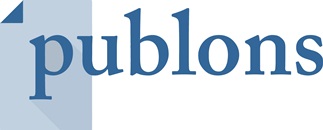BURNT INJURIES OF THE CHEST CAVITY: X-RAY DIAGNOSTICS OF VASCULAR INJURIES
DOI:
https://doi.org/10.32689/2663-0672-2023-1-5Keywords:
gunshot combat injury, wound channel, main vessels, injuries of the vascular bed, gunshot wound, primary surgical treatment, vascular injuryAbstract
Background. Difficult conditions of employment with gunshot wounds of the chest cavity, including damage to blood vessels, complicate wartime, because it is the incorrect tactics of managing patients that are of critical importance for their life, not just prolongation. Thus, modern firearms have extremely destructive powers, which in a conflict situation causes serious injuries among the military and the civilian population in the combat zone. The impossibility of speed management of such victims is not a problem, therefore the topic is relevant and urgent to study in order to improve effective methods of treatment. Aim. The method of work is to determine the characteristics of gunshot damage to the main vessel of the chest cavity. Materials and methods: analysis of theoretical sources, comparison, induction of isolated data Derivation of the hypothesis of consequences with clarification of its content. Experimental verification of the consequences of the hypothesis. Conclusions. The study of damage to the main vessel of the thoracic cavity due to gunshot wounds makes it possible to develop better methods of treatment and rehabilitation of patients.
References
Negative catheter angiography after vascular contrast extravasations on computed tomography in blunt torso trauma: an experience review of a clinical dilemma / K.C. Yuan et al. Scandinavian Journal of Trauma, Resuscitation and Emergency Medicine. 2012. Vol. 20. P. 46.
Penetrating Injuries of the Heart and Great Vessels – Fifteen Years of Experience of the Cardiac Surgery Service as a Part of the Major Trauma Centre / M. Šimek et al. Acta chirurgiae orthopaedicae et traumatologiae Čechoslovaca. 2018. Vol. 85. № 2. Р. 144‑148.
Penetrating thoracic injuries: a retrospective analysis from a French military trauma centre / A. Swiech et al. Journal of the Royal Army Medical Corps. 2019. Vol. 6. DOI: 10.1136/jramc-2019-001159
Surgical management of penetrating thoracic injuries during the Paris attacks on 13 November 2015 / G. Boddaert et al. European Journal of Cardio-Thoracic Surgery. 2017. Vol. 51. № 6. P. 1195-1202.
Thoracic venous injuries: an imaging and management overview / A.A. Haq et al. Emergency Radiology. 2016. Vol. 23. № 3. P. 291-301.
Traumatic left ventricular free-wall laceration by a gunshot: report of a case / T. Suzuki et al. Surgery Today. 2014. Vol. 44. № 6. P. 1152-1155. DOI: 10.1007/s00595-012-0457-5
Дикан І. Променева діагностика торакальних вогнепальних поранень. Radiation Diagnostics, Radiation Therapy. 2020. № 2. С. 70-80. DOI: https://doi.org/10.37336/2707-0700-2020-2-6
Етапність надання хірургічної допомоги при поєднаному торакоабдомінальному мінно-вибуховому пораненні з використанням тактики damage-контролю (клінічне спостереження) / І. П. Хоменко та ін. Одеський медичний журнал. 2017. № 3. С. 5-11.
Особливості хірургічної тактики при вогнепальних пораненнях судин на послідовних етапах медичної евакуації / В.Г. Мішалов та ін. Серце і судини. 2016. Вип. 2. С. 96-103.
Остроушко О. Особливості фізичної реабілітації при вогнепальних пораненнях плечового суглоба. Теорія і методика фізичного виховання і спорту. 2017. № 2. С. 59-62
Сучасні аспекти діагностики вогнепальних поранень живота. Досвід гібридної війни на сході України / О. І. Гречаник та ін. Клінічна хірургія. 2021. Т. 88, № 5-6. С. 42-52. DOI: 10.26779/2522-1396.2021.5-6.42
Роговський В. М. Здоров’я України : Інформація для спеціалістів охорони здоров’я. URL: https://health-ua.com/article/71180-klnchnij-dosvd-vedennya-patcntv-z-vognepalnimi-ranami-u-suchasnih-bojovih-u (дата звернення: 17.06.2023).










